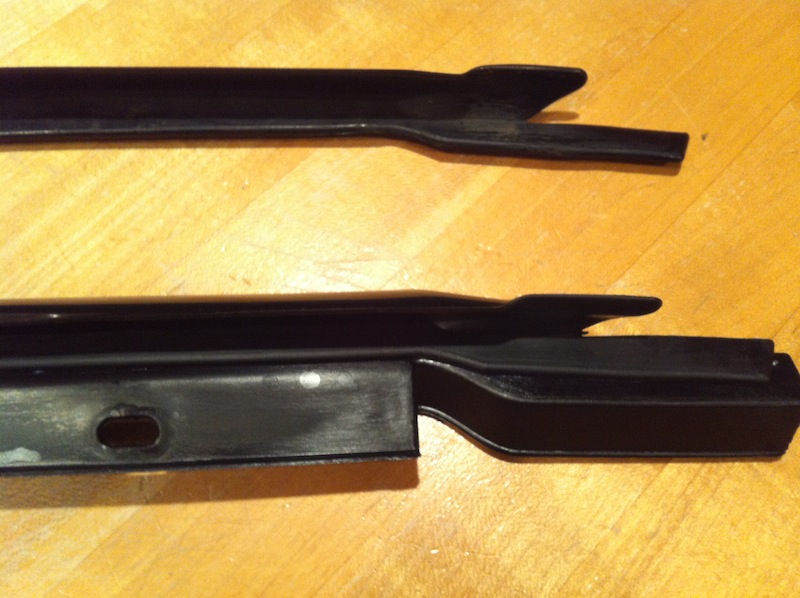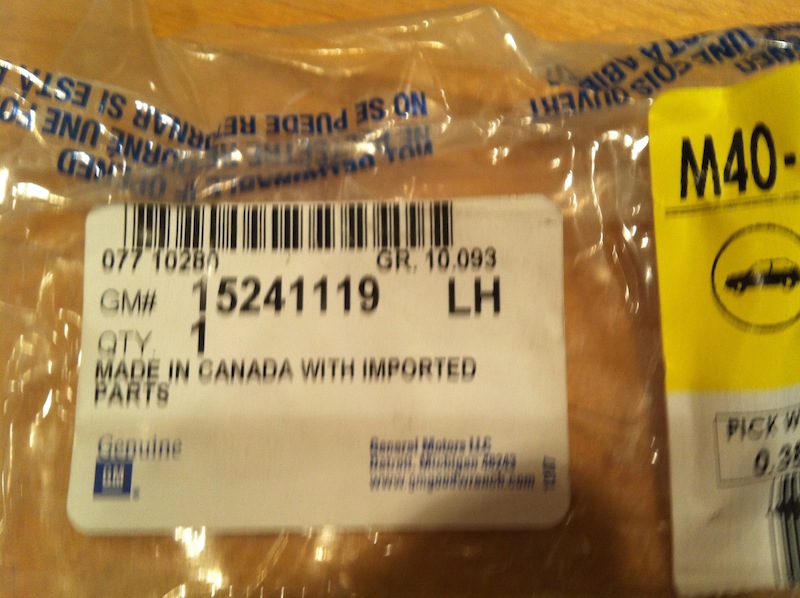The IMS (www.imsglobal.org) quarterly meeting at The Woodlands, Texas had several exciting demonstrations of implementations of IMS standards in leading products in the marketplace.
If you recall, back in July Ray Henderson announced that Blackboard Learn would ship support for IMS Common Cartridge and IMS Learning Tools Interoperability in their core product line by 1Q2011. This would mean that users could make use of these standards without installing a building block – the standards would be supported with a stock install of the product.
The July announcement left a bit of “wiggle room” as these announcements often do. The questions on everyone’s minds were (a) which version of Learning Tools Interoperability would they ship, (b) which version of Common Cartridge would they support, and (c) would they support export functionality in their implementation of CC.
Blackboard’s Demonstration in Texas
While the code is still in QA and has no firm shipping date, Blackboard demonstrated BBLearn 9.1-based software in Texas that answers all those questions quite nicely:
- It will support IMS Basic Learning Tools Interoperability 1.0 – and it has already passed the IMS Certification.
- It will support IMS Common Cartridge 1.0 and IMS Common Cartridge 1.1. IMS CC 1.0 is already released and Blackboard is nearly complete on certification. IMS CC 1.1 is not yet released but is well-described in the Basic LTI specification. Blackboard went ahead and implemented what should be CC 1.1 (i.e. it can import and export IMS Basic LTI placements as part of their cartridges).
- The Blackboard IMS Common Cartridge support includes a full-featured export. It does not just export cartridges that were imported, it can export anything from the Course Content section of a Blackboard course (including Basic LTI content items).
I was given a chance to play with the Blackboard QA servers and the support is quite nice and very easy to use. Basic LTI is a simple extension to their URL content type. No other LMS has taken this approach and it is actually very clever. It allows Blackboard to leverage a number of features in their product around allowing the administrator to monitor system activity.
In a sense, it builds on the notion that an IMS Basic LTI launch is simply a “smart URL”.
Angel Support for Basic LTI from Penn State
In another demonstration, the team from Penn State showed their implementation of Basic LTI for Angel. Penn State is using it to help them build tools that will function identically as they transition from Angel to some other Learning Management System over the next few years. Once of those projects is from the WebLion team that is a Learning Object Repository in development written using Plone and Zope that supports IMS Basic LTI Provider. Penn State expects to have Basic LTI running in their production Angel before 1Q2011.
While no formal plans have been announced, with a bit more development effort, the Angel support for Basic LTI can be passed to Blackboard – hopefully for inclusion in a patch release for Angel.
If Blackboard provides support for IMS Basic LTI both in Angel and in Blackboard 9.1 would allow Angel users to develop tools that could work in Angel that they could take with them as they transition to Blackboard 9.1.
I reviewed the Penn State Angel code and found it missing one feature required for certification which they plan to add. I am glad I got to take a look early enough in the process to insure that it could be certified.
Looking at Market Adoption
Once Blackboard ships their CC and BLTI and since Desire2Learn and Jenzbar already have CC and BLTI the combination over 90% of the commercial LMS market share access to these two specifications. The open source offerings are a bit behind. ATutor offers the only shipping certified IMS CC Import and Export but ATutor has no Basic LTI support (I am working on that now). Moodle 1.9 includes IMS CC support that is not yet certified and Moodle’s BasicLTI support is a mod that must be added to Moodle 1.9. Sakai 2.7, Melete, and OLAT are shipping with out-of-the-box support for IMS Basic LTI but none of them yet have support for Common Cartridge nor any immediate plans to add support for IMS CC.
So the commercial folks are ahead of the open source folks in this particular standards support race. :)
Learning Impact
As Rob Abel of IMS is always quick to point out, “IMS does not build standards for standards sake, but instead IMS standards are successful when they have positive impact on teaching and learning.”
So it is important to look at how nearly 100% penetration of these two standards in the marketplace changes things in a very positive way:
- When this feature is released, Blackboard’s ~40 million users will immediately have access to a top-of-the line tool to author Open Educational Resources that can be published and exchanged across virtually the entire learning spectrum. Since IMS Common Cartridge (unlike SCORM) is intended for importing, remixing, and re-exporting, it is the first widely used standard that allows teacher’s to use each other’s courses. And in particular, Blackboard’s IMS CC export works with already authored content in Blackboard. Teachers don’t even need to convert their content. As I have said in many talks, “exchanging course material should be like exchanging baseball trading cards”. In a sense, most of the current OER efforts are organization-centric – a widely available IMS CC authoring tool puts the distribution of OER materials in the hands of teachers. This changes the game significantly much like Cell phones with video capture and YouTube changed the nature of video production and distribution forever.
- Publishers seldom take the lead in a new format for publishing content but publishers are eager to have a one-format-for-all LMS systems. IMS CC promised to be just such a format, particularly when IMS Basic LTI support was added in CC 1.1 that allows publishers to embed authenticated links into a common cartridge. Publishers are amazingly quick at producing new formats when there is a demand for the format (after all they have been supporting about 30+ different formats for many years now – so what is one more). Think of the timing for a moment. Lets assume that a BBLearn release with Basic LTI and CC 1.1 come out by early next year in a Service Pack. If that happens, it is probably a safe assumption that most Blackboard 9.1 sites will install that patch well before September 2011. This means that publishers are likely to have a flood of IMS CC 1.0 and 1.1 materials ready for September 2011. We have the first nine months of 2011 for publishers to (a) figure this out, (b) get it implemented in production, and (c) send their salespeople to the ends of the earth with this awesome new product with never-before-seen features and portability across LMS systems. Then take a deep breath and think about Fall of 2012 when all the open source LMS systems also catch up and support IMS CC 1.1 as well. The publishers will have a field day. But more importantly, the teachers and students will benefit greatly from unprecedented access to high-quality materials.
- With IMS Basic LTI pretty much assumed in 100% of the marketplace in the out-of-the-box distributions, it makes it possible to produce a learning tool that supports IMS Basic LTI Provider and sell to 100% of the installed base of the LMS marketplace *the next day*. I foresee lots of companies like NoteFlight or LectureTools popping up and producing hundreds of learning tools to fill the largely unmet needs of the “long tail’ of teaching and learning tools. This will hopefuly spur rapid innovation, leading to a model much like the Apple App Store – but for education. In a a crazy version of this, teachers start buying tools hosted somewhere in the cloud for $0.99 for their course for semester. The opportunities for a clever startup company in this area are enormous. And what makes me particularly excited as a teacher is that fact that these tools will be more likely tools for Learning rather than tools for Learning Management. We already have lots of options for Learning Management Systems such as Blackboard, Sakai, Desire2Learn, Moodle, etc – as a matter of fact lots of campuses already have several LMS systems in production at the same time. But what we are missing are Learning tools – with the LMS market pretty saturated – the growth opportunities will be in these Learning Tools and investment and talent will flow toward building a whole new set of tools that will help us teach instead of just helping us manage teaching.
Conclusion
Many claim that “the end of the LMS is near” and I simply laugh when I hear that because the market needs what LMS systems deliver and is clearly willing to pay a lot of money to have LMS systems on their campuses. And lots of teachers and students find LMS systems quite useful making LMS systems the most-used IT service on most campuses. If you say, “The end is near” – I say, “Yeah right” or “Show me the money”.
I claim that instead of seeing the extinction of LMS systems, we are going to start to see an exciting evolution of these systems to a future where content and functionality move freely between the systems and we find our existing LMS systems doing far more to improve teaching and learning than we had ever thought possible.
The path we are on leads to an exciting and expansive future without leaving the comfortable and useful technology of the past behind.
There are two phases of a market – before and after it reaches the tipping point. It is a bit hard to detect when a market passes the tipping point, but I feel that once Blackboard ships the products they demonstrated this week, those watching closely will feel what it is like to go through the tipping point and experience a market beyond its tipping point.
I suggest that we all hold on tight – it is going to be a fun ride.



